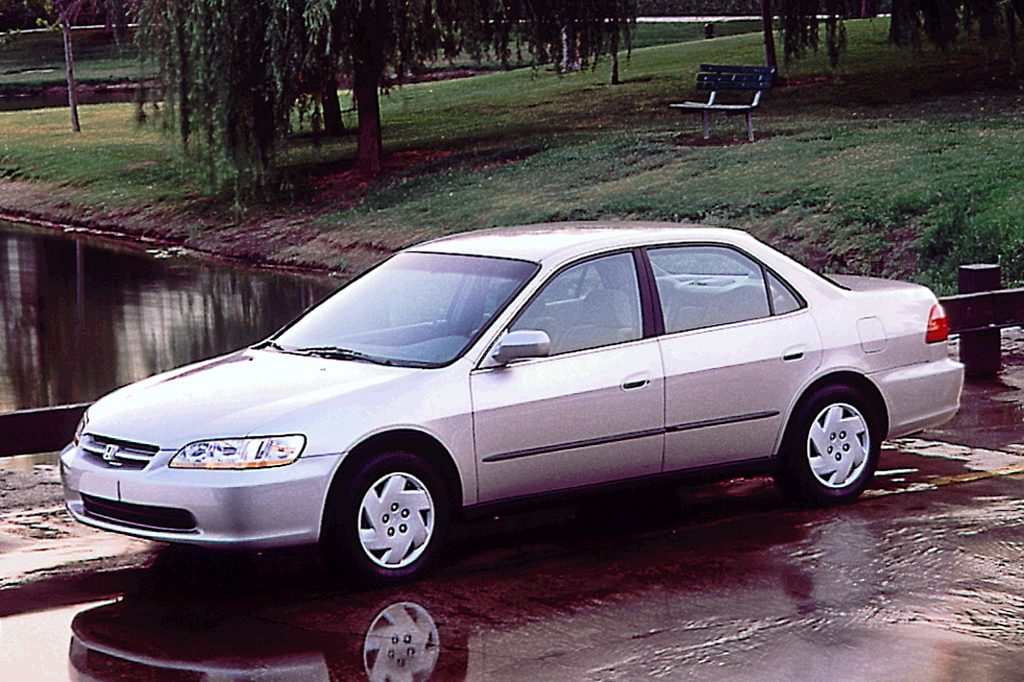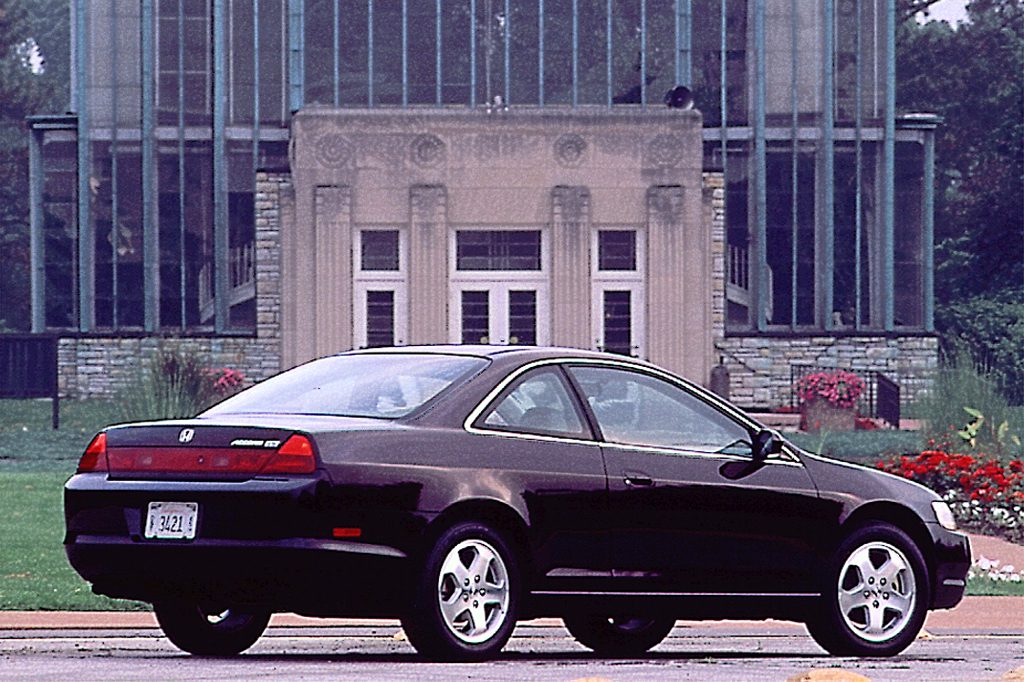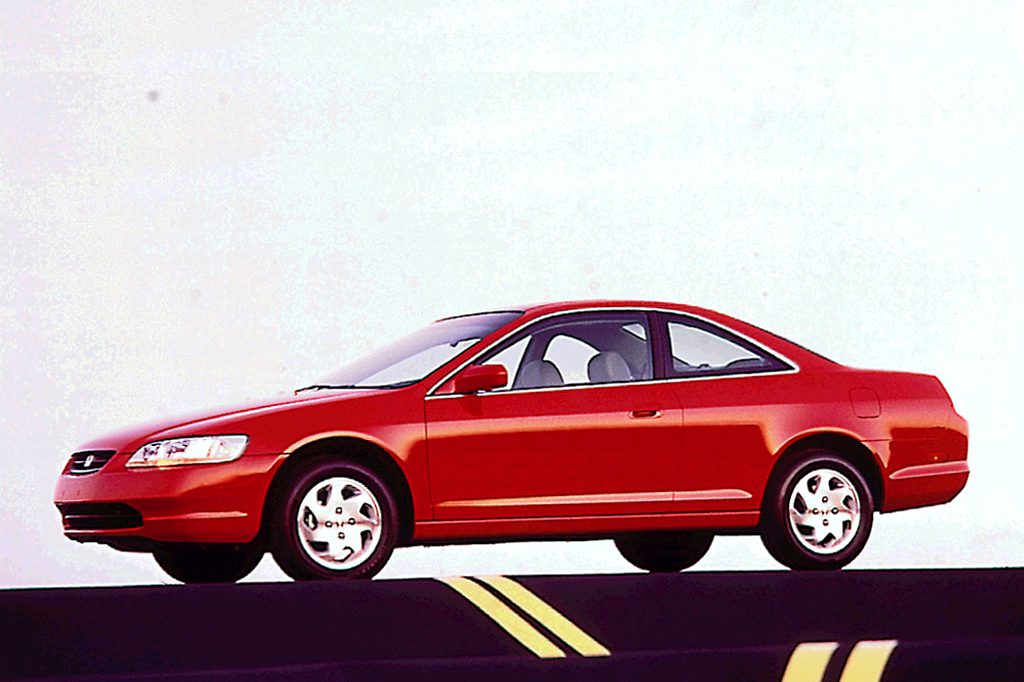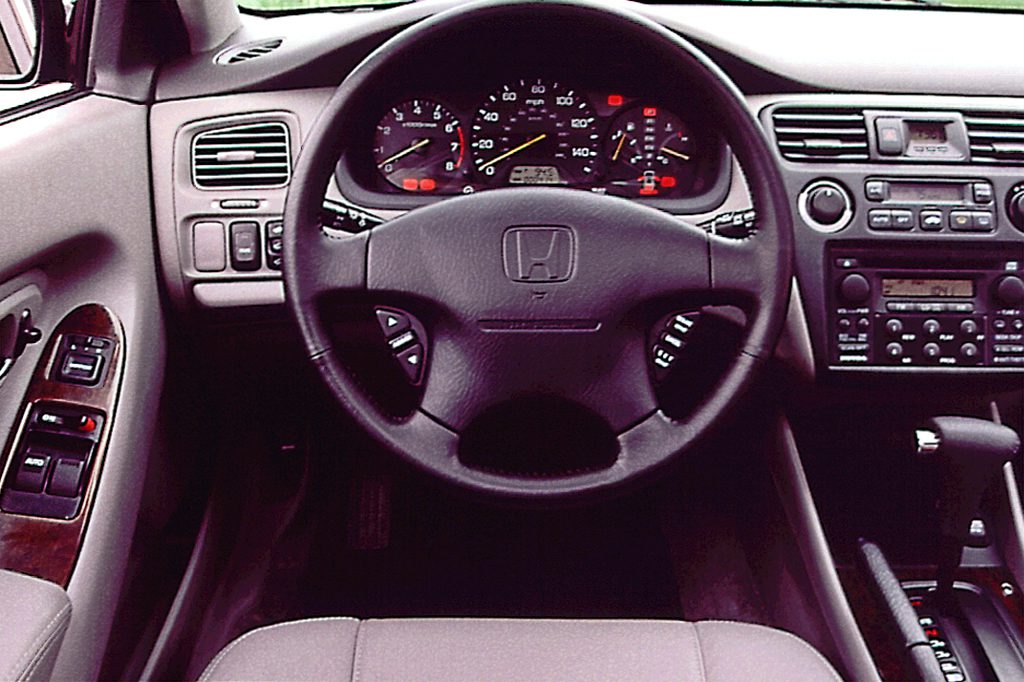| Midsize car; Built in USA |
|
|
| Good condition price range: $2,200 – $5,800* |

1998 Honda Accord LS V6 4-door sedan

1998 Honda Accord EX V-6 2-door coupe

1998 Honda Accord EX 2-door coupe

1998 Honda Accord interior

1998 Honda Accord LX V-6 4-door sedan
| Pros: |
|
| Cons: |
|
If you’re in the market for a top-notch midsize family sedan (or coupe), don’t buy until you’ve test-driven an Accord. Resale values tend to be on the high side, however, so don’t expect fantastic bargains.
Overview
For its latest generation, Honda’s mainstay earned a total redesign. Dimensions grew only marginally, and the station wagon body style disappeared. For the first time, the Accord coupe got its own distinctive appearance. Wheelbases were unchanged, but the new Accord was slightly longer overall, as well as taller. Coupes spanned a wheelbase 1.8 inches shorter than that of the sedan, and stood a bit lower and shorter than before. Both body styles came in LX and EX trim levels, with either 4-cylinder or V6 power. A price-leader 4-cylinder DX sedan also went on sale. In the DX model, the 2.3-liter 4-cylinder engine developed 135 horsepower (5 more than the previous 2.2-liter four). LX and EX models got a more powerful 4-cylinder engine with Honda’s VTEC variable valve timing, rated at 150 horsepower. A new 3.0-liter V6 engine, introduced in the upscale Acura CL coupe and equipped with VTEC variable valve timing, replaced the prior 2.7-liter 6-cylinder. All Accords came with standard 5-speed manual shift, or an optional 4-speed automatic transmission. Antilock brakes were standard on V6 and 4-cylinder EX models, and optional on the 4-cylinder LX sedan with automatic transmission.
Yearly Updates
| 1999 Accord An antitheft system went into all ’99 Accords. In LX V6 models, the power driver’s seat gained a power recliner. EX models added a standard remote keyless entry system. |
| 2000 Accord Front side airbags became standard on V6 models and on leather-equipped 4-cylinder EXs. All Accords gained a dual-stage passenger-side dashboard airbag, which could deactivate if sensors determined the passenger was too small or out of position. |
| 2001 Accord V6 models got standard traction control for 2001. Passenger-side front and side airbags were now designed to automatically deactivate if seat-mounted sensors detect that a passenger is too small or out of position. All models received subtle restyling, and all but the DX sedan got lighted power-window switches. Also for 2001, EX V6s added standard automatic climate control, in-dash CD changer, and 4-way power passenger seat; 4-cylinder EXs got in-dash changers, while LXs were upgraded to 6-speaker audio with a single-disc in-dash player. |
| 2002 Accord Addition of a popularly equipped SE model signaled 2002 as the final model year for the current Accord design. EX versions gained steering-wheel audio controls this year. Accord would be redesigned for 2003. |
